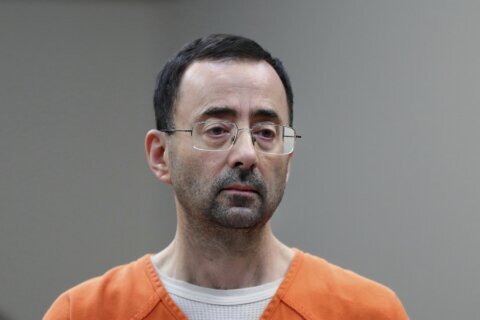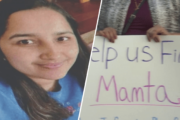Hearing the words, “You have cancer,” can be one of the most difficult experiences someone can go through. While processing the gravity of such a diagnosis, it’s natural to wonder what to expect with your treatment plan.
Medical advancements today make it so cancer is often treatable or curable, and recovery is possible. Here are the basics of what to know about chemotherapy, preventative chemotherapy and the side effects of chemotherapy.
[SEE: Questions to Ask Your Oncologist at Your First Cancer Appointment.]
What Is Chemotherapy?
Chemotherapy is a common treatment for cancer. Since cancer is a condition of uncontrolled and abnormal cell growth in the body, chemotherapy aims to target and destroy these rapidly dividing cells to halt disease progression. In some cases, chemotherapy may administered for non-cancerous autoimmune conditions, like rheumatoid arthritis or lupus.
Many commonly used chemotherapy drugs, like Doxorubicin and Carboplatin, for example, work by disrupting DNA, preventing cell reproduction and causing cell death.
Various chemotherapy treatments can target different cancers, and often multiple chemotherapy drugs are given together, which is called combination chemotherapy. Chemotherapy is commonly given in regular intervals called cycles since it’s hard on the body. During a chemotherapy cycle, cancer cells, along with many healthy cells, die. After the cycle, the body starts to repair healthy cells again, giving time to prepare for another round of chemotherapy.
Chemotherapy drugs can be administered in different ways, such as:
— Orally in pill or capsule form
— Intravenously, called chemotherapy infusions, which are administered by needle, catheter, port or pump. Port placement requires minor surgery.
— Chemotherapy shots that are injected with a needle underneath the skin
— Chemotherapy cream or gels that are applied on the skin for certain types of skin cancer
— Chemotherapy drugs may be targeted to a specific part of the body. For example, chemotherapy drugs can be given directly in the abdominal or chest cavity, bladder or central nervous system. One form is hyperthermic intraperitoneal chemotherapy. It puts heated chemotherapy in your abdomen after surgery.
A treatment session can take anywhere from a few minutes to a few hours to a few days. Most patients are able to get their treatment in their doctor’s office, but others might need to be admitted to the hospital.
[13 Questions to Ask Your Doctor About Prostate Cancer]
Who Needs Chemotherapy?
Chemotherapy is a key treatment option for individuals with cancer. Cancer may be detected through imaging, colonoscopies or mammograms. In some cases, a biopsy can confirm cancer. However, a biopsy is only a small tissue sampling. In other situations, surgery may be necessary to confirm the presence of cancer and the type of cancer.
However, surgeries aren’t always conclusive. “Even with the most experienced eyes and hands in the operating room, variables such as the size or location of the tumor or limitations in tissue assessment can play a role,” says Dr. Aakash Gajjar, a colorectal surgeon at Memorial Hermann Health System in Houston.
Cancer doctors base their treatment plans, dosage and chemotherapy cycle on evidence-based guidelines, like guidelines from the National Comprehensive Cancer Network. Sometimes doctors may deviate from NCCN guidelines “if there is new evidence that has not made its way into publication just yet, or if there are new clinical trials available for patients,” Gajjar says.
A medical oncologist oversees chemotherapy treatment. These health care providers specialize in chemotherapy and other cancer-fighting drugs, such as immunotherapy or targeted drug treatment.
The type of chemotherapy oncologists recommend depends on several factors, including:
— Type of cancer
— Stage of the cancer
— The patient’s overall health
— The patient’s wishes and treatment goals
Types of Chemotherapy
There are various purposes for chemotherapy.
— Curative chemotherapy: The goal of curative chemotherapy is to rid the body of all cancer cells to achieve eradication of the cancer and complete remission.
— Neoadjuvant therapy: You can think of this treatment as a preparation for the main cancer treatment. The goal of neoadjuvant chemotherapy is to shrink a tumor prior to surgery or radiation. This is mainly used in aggressive or advanced breast cancer, rectal cancer, lung cancer, esophageal and gastric cancers.
— Palliative chemotherapy: This treatment aims to improve quality of life by diminishing or stabilizing cancer burden, but it cannot rid the body of all the cancer as it is too advanced. This is a comfort measure at the end of life, in collaboration with a hospice or palliative care provider. We also hope to improve cancer symptoms with chemotherapy and supportive care.
— Preventative or adjuvant chemotherapy: After treatment of curative intent, like surgery or radiation therapy, preventative chemotherapy is another tool in the arsenal to ensure any lingering cancer dies.
— Concurrent chemotherapy: This is given with radiation to attempt to cure or control cancers, such as rectal or lung cancer.
How frequently is chemotherapy given?
Chemotherapy can be given on a variety of schedules, like:
— Once a week
— Once every two weeks
— Once every three weeks
— Once every four weeks
— Three days in a row every three weeks
Chemotherapy schedules are based on the type of chemotherapy drug and how it breaks down in the body.
[See: Colon Cancer Diet.]
What Is Preventative Chemotherapy?
Preventative chemotherapy is done to decrease the chance of cancer coming back after treatment of curative intent, like surgery to remove the cancer, Dr. Frank Tsai, oncologist and researcher at HonorHealth Research Institute in Scottsdale, Arizona explains. This is also referred to as adjuvant chemotherapy, meaning it’s intended to prevent cancer recurrence.
Doctors typically recommend preventative chemotherapy after a surgery where the cancer is further along, where lymph nodes are involved, where the tumor was in direct contact with another organ or where it perforated. Or, if aggressive cancer features are identified later on through tumor testing called biomarker testing, like HER2 neu expression testing for breast cancer cells, explains Dr. Monique Gary, a breast surgical oncologist and medical director of the Grand View Health cancer program in Sellersville, Pennsylvania. She says cancers that are found at stage zero or in situ, meaning the cancer has not spread, do not require chemotherapy.
Tsai adds, “the first step is to meet with the patient and talk about the plan for chemotherapy. We base this on what type of cancer the patient has, how much benefit preventative chemotherapy has been shown for their cancer, if it improves survival rate, what the side effects are and what the impact will be on their lifestyle.”
Preventative chemotherapy is only done in certain cancers where research has shown it to benefit patients, which may include, but are not limited to:
— Lung cancer
[SEE: Colon Cancer Symptoms That Are Easily Overlooked.]
What Are the Side Effects of Chemotherapy?
Because chemotherapy kills not only the cancer cells but also healthy cells, there are many side effects.
Side effects vary from person to person, says Dr. Misagh Karimi, a medical oncologist at City of Hope Orange County in California.
For example, certain types of chemotherapy — like Oxaliplatin used to treat colon cancer — may cause sensitivity to cold, including chilly weather and cold beverages. Patients experiencing temperature side effects will be advised to avoid icy or cold drinks — this can last for several days after the infusion. Tastes can also change during treatment, and once-favorite foods may seem “off.”
Karimi says some side effects might include:
— Fatigue
— Nausea
— Vomiting
— Diarrhea
— Fever
— Pain
— Infection
— Loss of appetite
— Neuropathy, which is numbness, tingling or weakness due to nerve damage
— Sores in the mouth or throat
— Heart damage
Some chemotherapy drugs can cause painful side effects, such as aching in the muscles and joints, headaches and stomach pains. Pain may be felt as burning, numbness, tingling or shooting pains in the hands and feet (called peripheral nerve damage). This type of pain can last long after treatment ends.
Hair loss is often a concern for patients undergoing chemotherapy. Some chemotherapy drugs do cause hair loss. Others may cause only hair thinning, and some may not cause any hair loss. The reason hair loss sometimes happens is that chemotherapy drugs affect rapidly dividing cells. This describes not only cancer cells, but also those found in the hair follicles, mouth and gastrointestinal tract.
To mitigate these symptoms, your doctor may prescribe you medications to counteract some of the symptoms.
To off-set the side effects from chemo, Karimi also suggests that patients:
— Eat a balanced diet of foods that are bland and easy to digest, like oatmeal. Frozen grapes or melon balls are worth a try for mouth sore, if cold sensitivity isn’t an issue.
— Do gentle exercise, like yoga or walking.
Always follow the advice of your medical provider before trying any home remedies. “For example, we know that some vitamins can make chemotherapy less effective,” Karimi warns.
Long-Lasting and Later-Developing Side Effects of Chemotherapy
Due to the intensity of chemotherapy, there may be lasting or later-developing side effects throughout your life. Prior to receiving chemotherapy, your medical provider will weigh these risks against the risk of your cancer being left untreated, as well as your personal wishes, expected quality of life and prognosis.
According to the National Cancer Institute, some of these risks include:
— Bone loss
— Brain or cognitive changes
— Eye problems.
— Heart problems.
— Lung problems
— Mouth changes
— Lymphedema, or swelling of the lymph tissue
— Changes in mental health, like developing post-traumatic stress disorder due to the hardships of treatment
The most effective remedy to combat these side effects is to establish a dependable care team. During and after cancer treatment, keep up with your primary care provider, dentist, specialists, audiologists and mental health providers in addition to your cancer doctors. Having regular check-ups and following recommendations from your care team ensures you will maintain the best quality of life possible even after completing treatment.
Success Rate of Chemotherapy
Chemotherapy may be an effective treatment option for many patients. Cancer patients who receive chemotherapy have better overall survival rates than those who have no chemotherapy. Success rates vary for different types of cancer and should be reviewed by the oncologist.
The Bottom Line
Chemotherapy is a treatment that makes remission and recovery from cancer possible.
With precision oncology, we can look at tumor cells early on and understand how aggressively they may behave in the body. This can help determine the potential benefits of chemotherapy, Gary explains. “It’s important for people of all ages, and in particular younger women, to pay attention to their bodies and understand what is normal to them,” Gary urges. “Do not dismiss your symptoms.”
More from U.S. News
6 Surprising Things That Age You
Processed and Ultraprocessed Foods: Examples and Health Risks
What Is Chemotherapy and How Does It Work? originally appeared on usnews.com
Update 08/20/24: This story was published at an earlier date and has been updated with new information.







